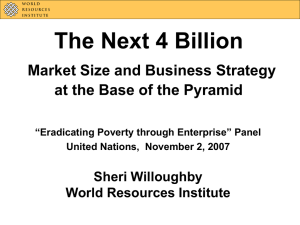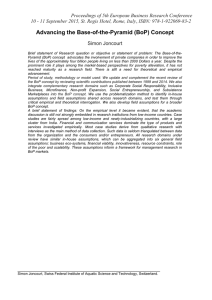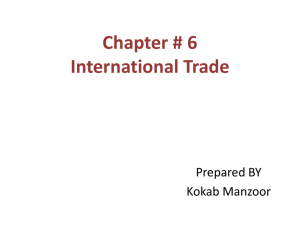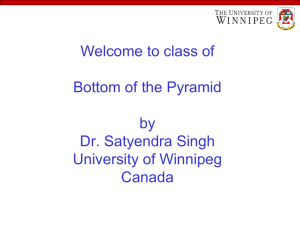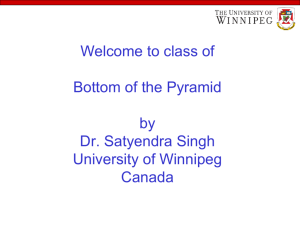Session 6.1b
advertisement
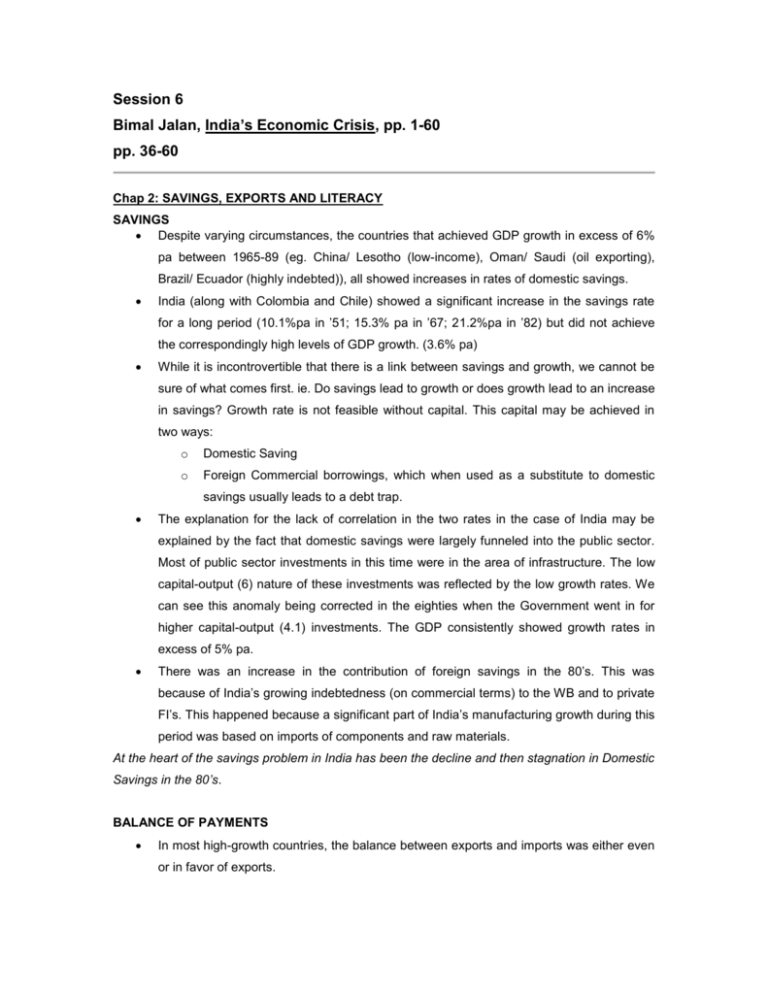
Session 6 Bimal Jalan, India’s Economic Crisis, pp. 1-60 pp. 36-60 Chap 2: SAVINGS, EXPORTS AND LITERACY SAVINGS Despite varying circumstances, the countries that achieved GDP growth in excess of 6% pa between 1965-89 (eg. China/ Lesotho (low-income), Oman/ Saudi (oil exporting), Brazil/ Ecuador (highly indebted)), all showed increases in rates of domestic savings. India (along with Colombia and Chile) showed a significant increase in the savings rate for a long period (10.1%pa in ’51; 15.3% pa in ’67; 21.2%pa in ’82) but did not achieve the correspondingly high levels of GDP growth. (3.6% pa) While it is incontrovertible that there is a link between savings and growth, we cannot be sure of what comes first. ie. Do savings lead to growth or does growth lead to an increase in savings? Growth rate is not feasible without capital. This capital may be achieved in two ways: o Domestic Saving o Foreign Commercial borrowings, which when used as a substitute to domestic savings usually leads to a debt trap. The explanation for the lack of correlation in the two rates in the case of India may be explained by the fact that domestic savings were largely funneled into the public sector. Most of public sector investments in this time were in the area of infrastructure. The low capital-output (6) nature of these investments was reflected by the low growth rates. We can see this anomaly being corrected in the eighties when the Government went in for higher capital-output (4.1) investments. The GDP consistently showed growth rates in excess of 5% pa. There was an increase in the contribution of foreign savings in the 80’s. This was because of India’s growing indebtedness (on commercial terms) to the WB and to private FI’s. This happened because a significant part of India’s manufacturing growth during this period was based on imports of components and raw materials. At the heart of the savings problem in India has been the decline and then stagnation in Domestic Savings in the 80’s. BALANCE OF PAYMENTS In most high-growth countries, the balance between exports and imports was either even or in favor of exports. Heavy capital investment, (in imported machinery and techniques for industrialization) immediately after Independence led to a sharp fall in India’s FOREX reserves. Since then to now, India’s economic policies have largely tried to address the continuing BOP problem. The BOP situation in India remained precarious from 1956-68, when severe droughts and Two Wars exacerbated the situation. 1969-74, showed a slight improvement in the situation. Contrary to expectations, the BOP situation showed a turnaround despite the oil crisis of 1974. This was because of policies that: o Improved the export situation o Reduced imports o Controlled inflation o Flow of savings from migrant Indian workers to the Arabian Gulf. The oil crisis of 1979 put India in a precarious BOP situation that it could get out of only by borrowing from the IMF. The reserves continued to decline until the Gulf War in ’91. The problem was exacerbated by the declining availability of concessional assistance from the Ida in the WB Group. BOP concern is likely to dominate India’s economic policy-making. The policy challenge for the 90’s was to find a solution to the address the BOP problem without sacrificing efficiency, by reducing red bureaucratic controls and safeguarding against a drop in the growth rate of the economy. LITERACY Fast growing countries (Thailand, China, Indonesia) show an adult literacy rate of 69%. The Asian average is 60%. According to Shultz, the contribution of schooling to growth exceeds that of material capital. According to a study by Denison, 21% of material growth in the US, between 1929-57 could be attributed to material growth. High literacy also ensures equitable distribution of wealth. Adult literacy ratio in India was at 45% in 1985. This, despite the fact that India spends nearly 3.6% of its GDP on education. (Korea spends 3.4%). The reason for India’s poor literacy performance is that the proportion it spends on primary education is relatively low, and is further declining. More money needs to be spent on primary education in India. From an economic point of view not much more can be said about the situation.
